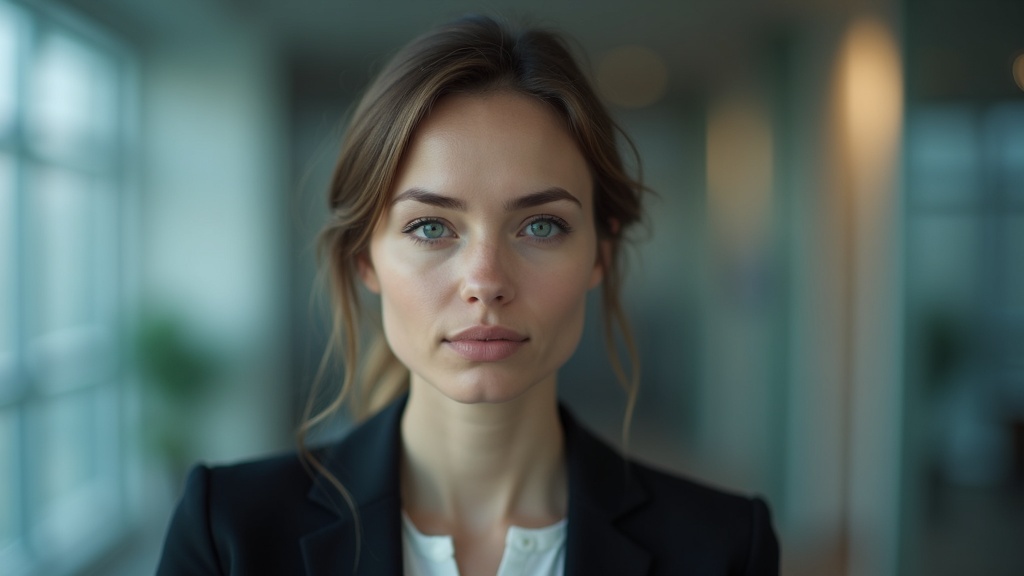AI Portraits for Business Use: Rights, Quality, and Practical Steps

This image was created in the BlendMe.ai app.
Why AI Portraits Are Now a Business Asset
The shift to remote work and digital-first hiring means your visuals are often the first impression. AI-generated portraits let small businesses, agencies, and solo founders create consistent, high-quality imagery without scheduling expensive photoshoots. For a practical, secure tool that handles generation, editing, and image-to-video, see BlendMe.ai.
This guide explains the legal and technical checklist for using AI portraits commercially, plus practical steps to ensure quality and brand consistency.
The business case: speed, scale, and cost-efficiency
- Faster turnaround: Generate unlimited headshots in under a minute instead of booking a studio.
- Scalable consistency: Produce a uniform visual style across team bios, marketing assets, and ads.
- Lower cost per asset: One small investment in an AI portrait workflow can replace recurring shoot fees.
Keywords to consider for SEO and search intent: AI portraits, AI-generated portraits, commercial use, image licensing, high-resolution headshots, visual brand.
Legal & licensing checklist (what to confirm before using portraits commercially)
- Model rights and consent
- If the portraits are of you or consenting employees, retain written consent specifying commercial use.
- For portraits generated by training on user photos, confirm that the platform’s terms grant you commercial usage rights.
- Platform terms and ownership
- Read the service terms for ownership clauses. Some platforms grant users full commercial rights to AI outputs; others apply restrictions.
- Keep a copy (screenshot/PDF) of the terms in effect when images were created.
- Trademark and brand protection
- Avoid auto-generated elements that resemble protected logos or celebrities. When in doubt, tweak styles via editing tools to ensure uniqueness.
- Third-party content
- If using brand props or background imagery, ensure those elements are licensed for commercial use.
Image quality & technical specs for commercial use
- Resolution: Aim for at least 3,000 px on the long edge for print-ready headshots; 1,200–2,000 px is adequate for most digital uses.
- File formats: Use high-quality PNG or JPEG for web; export TIFF or high-quality JPG for print.
- Color profile: Export print assets in sRGB or CMYK depending on printer requirements.
- Aspect ratios: Save variants for platform fit — square (1:1) for profiles, 4:5 for socials, 16:9 for hero images.
BlendMe.ai’s high-resolution outputs make it simple to get the right format for both digital and print without losing sharpness.
Practical workflow: From upload to commercial asset
- Collect source photos (10–20 good-quality images). Verify consent for each subject.
- Train a personalized model (personalized AI portraits yield more authentic results).
- Generate variants in the styles you need: formal for team pages, lifestyle for marketing, themed for campaigns.
- Use built-in editing tools for retouching, background cleanup, and outfit swaps.
- Export multiple sizes and formats for your CMS, ad platforms, and printing.
This workflow reduces back-and-forth with photographers and agencies while keeping control over branding.
Use cases and mini-scenarios
- Small marketing team: Create a cohesive set of team photos to use across About pages, pitch decks, and ad creative.
- E-commerce founder: Produce consistent founder portraits for product pages, PR kits, and social ads.
- Agency: Rapidly generate campaign-specific portraits for mockups and A/B tests without casting new shoots.
Practical tips to protect your brand and reputation
- Keep originals and metadata: Store source photos and the generated outputs with metadata (date, model version, license) for audits.
- Add subtle variations: Use small styling differences to prevent your visual identity from feeling repetitive across campaigns.
- Watermark review copies: For external previews or partner approvals, share watermarked versions until final sign-off.
FAQs (short answers for busy teams)
Q: Can I use AI portraits in paid ads?
A: Generally yes if you have commercial rights under the platform’s terms and model consent—confirm both first.
Q: Are AI portraits good enough for print?
A: Yes—when you export high-resolution files and check color profiles. Many platforms, including BlendMe.ai, support print-ready outputs.
Q: What about privacy and data security?
A: Use services that process uploads securely and explicitly state they won't share your data with third parties.
Putting it into practice
AI-generated portraits are a pragmatic way to produce consistent, business-ready visuals at scale. Start by auditing your legal permissions and deciding the formats you need, then adopt a repeatable workflow: collect source images, train a model, generate styles, and export platform-specific files. Tools that combine generation, editing, and image-to-video functionality reduce vendor friction and speed up campaigns—making it easier to keep visuals fresh and compliant across channels.
Ready to convert your portrait library into polished, commercial-grade assets? Download the app.